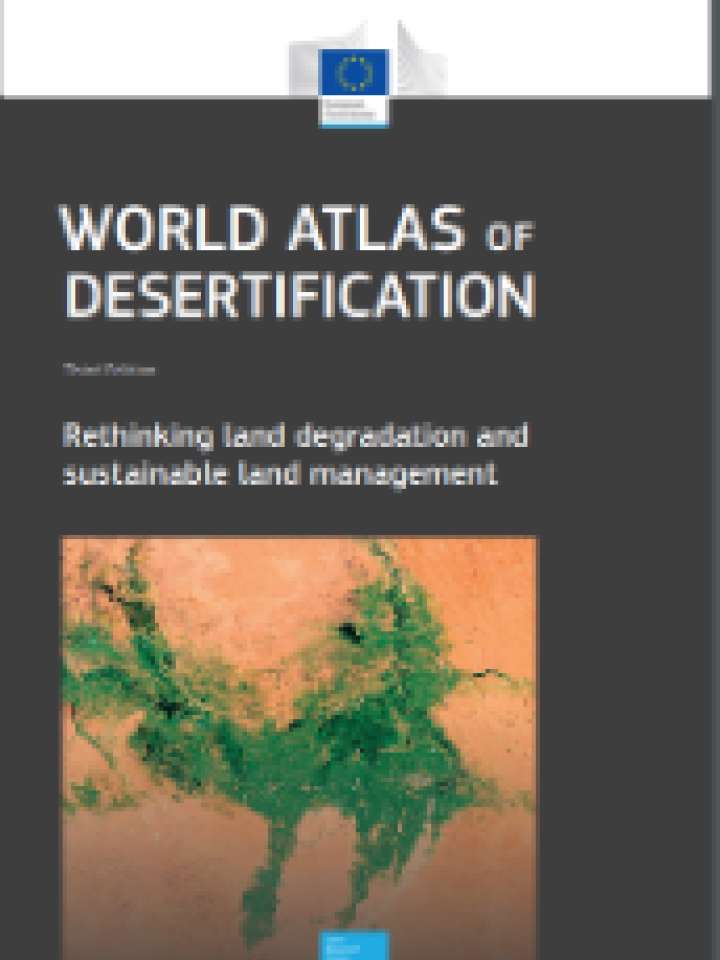World Atlas of Desertification: Rethinking land degradation and sustainable land management
This third edition of the World Atlas of Desertification focuses on land degradation and global environmental change under five major subject headings:
- Global Patterns of Human Domination. Highlighting the role of Homo sapiens as the major driving force of global environmental change;
- Feeding a Growing Global Population. The ability to feed 10-12 billion humans by the end of the century is one of the great challenges facing humanity, creating enormous burdens on the land;
- Limits to Sustainability. The Brundtland Commission defined sustainable development as “development which meets the needs of the present, without compromising the ability of future generations to meet their own needs”. There are numerous obstacles that must be overcome to achieve this goal;
- Convergence of Evidence. Many of the anthropogenicinduced environmental changes can be measured and their combined effects are indicative of the multiple stresses humans exert on the land. WAD3 draws on this complexity by adopting the concept that evidence or signals from multiple sources may “converge”, thus leading to the development of testable hypotheses and/or conclusions that are supported by data. Convergence of evidence maps replace the ‘maps of desertification’ of WAD1- WAD2;
- Solutions. Potential solutions to land degradation need to be identified and implemented within the context of local social, economic and political conditions.
WAD3 presents examples of the extent of human presence on Earth. Currently, humans appropriate 20 to 25% of the Earth‘s annual net primary production (NPP) from land, while representing less than 1% of the total global mass of organisms. Increasingly, the Earth is transforming into the “urban planet”: by 2050, over two-thirds of the world’s population will reside in cities.
Key messages that emerge include:
- underlying and familiar factors - some old, some new - are driving environmental change/land degradation at a global scale;
- some recurring global issues (such as surface and ground water) have an alarming urgency that could not be known 20 years ago;
- there is a growing confirmation of suspected global trends (such as a decline in productivity) that may impact sustainability;
- global issues that were only suspected previously will shape how we look at both processes and solutions (such as telecouplings; smallholders vs. largeholders);
- some regional patterns of potential degradation are reconfirmed (south Asia; China) and some underlying causes are revealed (heavy fertiliser use and irrigation);
- new regional patterns of potential land degradation are revealed (especially in central Asia);
- concerns emerge at the regional level that brings into question our ability to meet the demands of future populations, e.g. maintaining and increasing yields on highdensity croplands and increasing crop yields (by closing yield gaps) on low-density and low-input croplands.
Explore further
